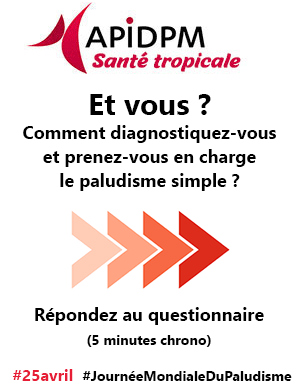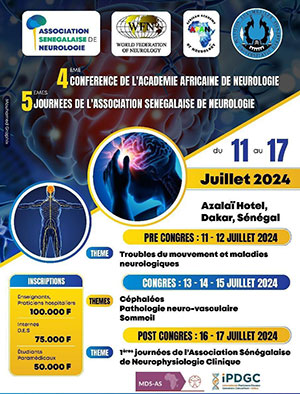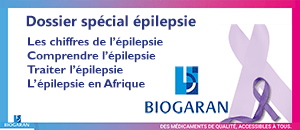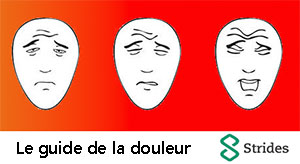Accès aux sites pays ![]()
![]() BENIN
BENIN![]() BURKINA FASO
BURKINA FASO![]() CAMEROUN
CAMEROUN![]() CENTRAFRIQUE
CENTRAFRIQUE![]() CONGO
CONGO![]() COTE D'IVOIRE
COTE D'IVOIRE![]() GABON
GABON
![]() GUINEE
GUINEE![]() MADAGASCAR
MADAGASCAR![]() MALI
MALI![]() R.D. CONGO
R.D. CONGO![]() SENEGAL
SENEGAL![]() TOGO
TOGO
Accès aux sites pays ![]()
![]() BENIN
BENIN![]() BURKINA FASO
BURKINA FASO![]() CAMEROUN
CAMEROUN![]() CENTRAFRIQUE
CENTRAFRIQUE![]() CONGO
CONGO![]() COTE D'IVOIRE
COTE D'IVOIRE![]() GABON
GABON
![]() GUINEE
GUINEE![]() MADAGASCAR
MADAGASCAR![]() MALI
MALI![]() R.D. CONGO
R.D. CONGO![]() SENEGAL
SENEGAL![]() TOGO
TOGO

Publié dans Médecine d'Afrique Noire 6209 - Août/Septembre 2015 - pages 429-434
 Transfusion sanguine en milieu obstétrical à l’hôpital de la mère et de l’enfant de N’Djaména (Tchad)
Transfusion sanguine en milieu obstétrical à l’hôpital de la mère et de l’enfant de N’Djaména (Tchad)Auteurs : BM Gabkika, L. Foumsou, A. Hadiza, A. Saleh, T. Adoum - Tchad
Introduction : L’hémorragie est la première cause de décès maternel au Tchad. Dans l’arsenal thérapeutique de l’hémorragie, le recours à la transfusion sanguine reste un événement possible et survient toujours après l’échec des premières manœuvres ou devant une hémorragie d’emblée cataclysmique.
L’objectif de cette étude était de déterminer la fréquence de la transfusion sanguine et ces principales indications, à la maternité de l’Hôpital de la Mère et de l’Enfant de N’Djaména, Tchad.
Patientes et méthodes : Etude prospective transversale, de cinq mois allant du 4 mars 2014 au 4 août 2014. Nous avons colligé 330 actes transfusionnels pratiqués chez 170 malades. Toutes les patientes hospitalisées durant la période d’étude qui ont été transfusées et ayant accepté de participer à notre étude étaient incluses. Les variables épidémiologiques, et les paramètres liés à la transfusion ont été recueillis sur une fiche d’enquête. L’analyse a été faite grâce au logiciel Epi Info 6.
Résultats : Nous avons recensé 170 patientes ayant bénéficié d'une transfusion sanguine sur 1003 patientes hospitalisées durant notre période d’étude soit un taux transfusionnel de 5,9%.
La tranche d’âge comprise entre 26-30 ans était plus représentée avec 30,6% (n = 52). L’âge des patientes avait varié entre 15 et 45 ans avec un âge moyen de 26,36 ans.
Les hémorragies de la délivrance étaient la première indication de la transfusion avec 24,1% (n = 41) suivies des avortements hémorragiques (n = 26 soit 15,3%). Quarante-huit patientes (28,2%) ont bénéficié de la transfusion en per opératoire. Toutes nos patientes avaient un taux d’hémoglobine < 7g/dl.
Plus de la moitié des patientes (58,8%) a été transfusée dans l’intervalle 1-2h après l’indication de la transfusion sanguine. Les incidents transfusionnels notés étaient : urticaire (6,5%), céphalées (1,7%), et frissons (2,9%).
Conclusion : La transfusion est une pratique courante en milieu obstétrical à N’Djaména. Les hémorragies dominent les indications transfusionnelles. La disponibilité des produits sanguins reste une préoccupation des praticiens et des familles.
Introduction: Hemorrhage is the main cause of maternal death in Chad. Among the therapeutic arsenal of bleeding, blood transfusion remains a possible event that can be used after the failure of the first maneuvers or immediately for cataclysmic hemorrhage.
The objective was to determine the frequency and the main indications of blood transfusion atN’Djamena hospital of Mother and Child.
Patients and methods: Prospective cross-sectional study, for five months from March 4th, 2014 to August 4th, 2014. We have carried out 330 blood transfusions. All patients transfused during the survey period and that agreed to participate at this survey were included. Epidemiological variables and parameters linked with blood transfusion were collected. The analysis was done using the Epi Info 6 software.
Results: We registered 170 patients who received blood transfusion among 1003 patients giving a frequency of 5,9%. The age group between 26-30 years was most represented with 30.6% (n = 52). The age of the patients had varied from 15 to 45 years with a average age of 26.36 years.
The postpartum hemorrhage were the first indication of blood transfusion with 24.1% (n = 41), followed by hemorrhagic abortions (n = 26, 15.3%). Forty eight patients (28.2%) had received operative blood transfusion. All patients had a hemoglobin < 7 g/dl.
More than half of patients (58.8%) were transfused in the interval of 1-2 h after the indication of blood transfusion. The transfusion incidents recorded were: urticaria (6.5%), headache (1.7%) and shiver (2.9%).
Conclusion: Blood transfusion is a common practice in obstetrical field in N'Djamena hospital of Mother and child. The hemorrhage had dominated the indications of blood transfusion. Availability of blood products remains a worry for practitioners and families.
Cet article est actuellement coté ![]() (1,5 étoiles) par les abonnés de Médecine d'Afrique Noire.
(1,5 étoiles) par les abonnés de Médecine d'Afrique Noire.
Il a été consulté 1894 fois, téléchargé 50 fois et évalué 2 fois.
1 commentaire a été posté à propos de cet article
 Obtenir l'article intégral en PDF
Obtenir l'article intégral en PDF
Plus de résumés d'articles - Plus d'articles en texte intégral
Restez informés : recevez, chaque mercredi, la revue de presse de Santé tropicale. Inscriptions


Ce contenu gratuit vous est destiné :







![]() Adresse
Adresse
![]() Téléphone
Téléphone
![]() Contactez-nous
Contactez-nous
Actualités
Articles médicaux